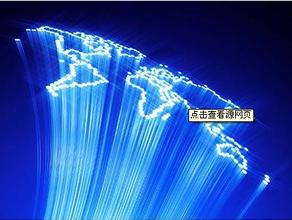Location:Home > News >
FTTH CALLING FOR BRIGHT FUTURE FOR CHANGGUANG FIBER OPTIC CA
FTTH and Fiber Optic Cable Connect the world and calling for Bright Future for Communication Cable Manufacturer
We all agree that without communication it will be impossible for us to conduct business or stay in touch with family and friends. Today we are connected through devices and constantly in touch with others via phones, email and various social media platforms.
Telecommunication has become an integral part of our daily lives. The World Wide Web has become a trusted friend and we spend many hours searching for information and looking for answers to any questions we may have. We have massive amounts of information are at our fingertips – and it keeps growing every day.
Every once in a while a phenomenal technological breakthrough comes along that changes the world. In the context of telecommunications, that technology is optical fibre. In the past, our communication networks were built on traditional copper cabling. As data traffic on networks continue to grow we have to seek alternative technologies to accommodate this constant demand for higher bandwidth – optical fibre. Optical fibre is a hair-thin, highly transparent strand of glass. Today, many telecommunications companies are using optical fibre to replace the standard copper wire traditionally used to transmit telecommunications. Whilst copper lines have limited capacity and creates a bottleneck for technologies that need greater bandwidth, fibre is a highly desirable telecommunications medium since it can carry high speed broad-band services.
This is because fibre optics uses light, instead of electricity, to send information. The light in a fibre optic cable travels through it by a principle called ‘total internal reflection’. Because the cladding does not absorb any light from the core, the light wave can travel great distances at the speed of light. This technology is now being used all over the world to enable better broadband speeds and to transmit large amounts of data at high speeds, from country to country. Fibre optic cables even connect continents – cables laid on the seabed using specialised cable laying ships.
While submarine communication cables are used to connect countries and continents to the Internet, terrestrial fibre optic cables are used to extend this connectivity to towns and countries across South Africa.
The construction of both submarine cables and their terrestrial extensions is thus considered an important step to the economic growth and development of many African countries.

Get in Touch
+86-21-3996-3837
alex@changguangchina.com
+86-15216725374


